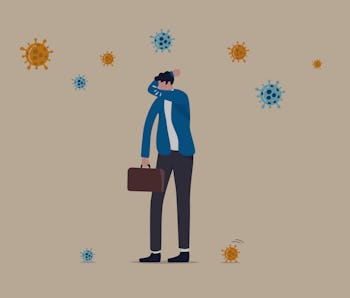Culture
This Google Doc is more informative about COVID-19 than the government
The CDC and the WHO are still refusing to acknowledge airborne transmission for COVID-19. So a group of scientists took matters into their own hands.

As if the virus weren’t troublesome enough on its own, the world is also struggling with disseminating information about COVID-19, making the coping process much more difficult. Seven months after its first detection in the United States and we’re still not entirely sure how it spreads, for example, though the internet will give you a wide variety of answers if you ask. The U.S. government’s in-fighting has only served to worsen misinformation and misunderstandings.
That’s why Jose-Luis Jiminez, a chemistry professor at the University of Colorado, created an open-sourced FAQ about airborne transmission of COVID-19. The FAQ on Protecting Yourself from COVID-19 Aerosol Transmission is 57 pages long at this point, and so many people are accessing it at any given time that Google Docs often displays a “heavy traffic” warning while loading it.
Jiminez has studied aerosol transmission for more than two decades. He told the MIT Technology Review that he created the Google Doc after receiving many questions via Twitter and email. He’s fleshed it out with assistance from other aerosol-transmission experts and colleagues. The FAQ is equally comprehensive and user-friendly — a combination that’s increasingly difficult to come by.
Misinformation abounds — The pandemic has renewed every fault in our information systems. Even those we’re meant to trust most fervently have proven problematic.
Both the Centers for Disease Control and the World Health Organization have said for months now that COVID-19 is spread mainly through droplets. But experts have raised the possibility the virus spreads through the air, too — and the CDC seemed to agree, as it changed its website last month to acknowledge airborne transmission. That guideline was quickly scrubbed from the CDC’s website because, as an official told CNN, it “wasn’t ready to be posted.
A group of 239 experts in the field sent the WHO a letter in July pleading with the organization to acknowledge airborne transmission. Such an acknowledgment would fundamentally change the way we think about preventing the spread of COVID-19. And yet: still nothing from the WHO or the CDC on the matter.
Thank you, Internet — Jiminez’s FAQ is a rare gem of well-researched information in the enormity of chaos we call “the Internet.” In a world where social media companies spend their days waiting for government officials to spread their next bout of medical misinformation, the public is forced to scour the web for any modicum of truth.
As Jiminez points out in his interview with MIT, the traditional routes available for publishing scientific knowledge are slow and cumbersome. They’re not built for disseminating quick, up-to-date information.
So Google Docs — combined with some finessed marketing on social media — is the perfect match for Jiminez’s project. The platform has allowed him to create a comprehensive guide to aerosol transmission, share it with the world, and update it as he or his collaborators learn new information.
Misinformation has transformed the internet into a place of deceit. It’s very difficult, in 2020, to trust what you read on the internet, even when it comes from a “reputable” source like an international health agency. Jiminez’s airborne transmission FAQ is a reminder that the internet can sometimes be good, even if those cases seem rarer than ever.
Note: The Centers for Disease Control confirmed airborne transmission of COVID-19 on its website after the publication of this piece.